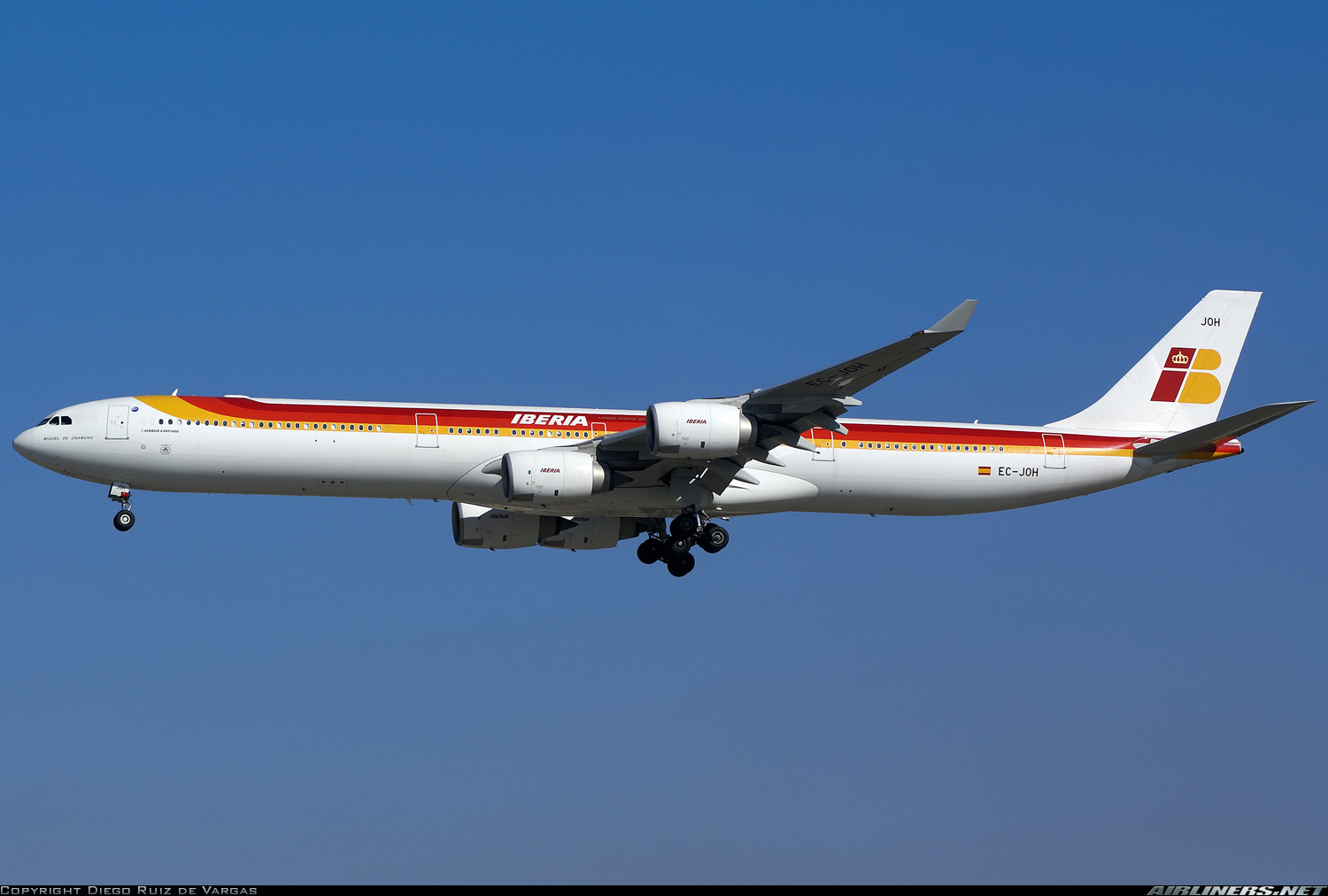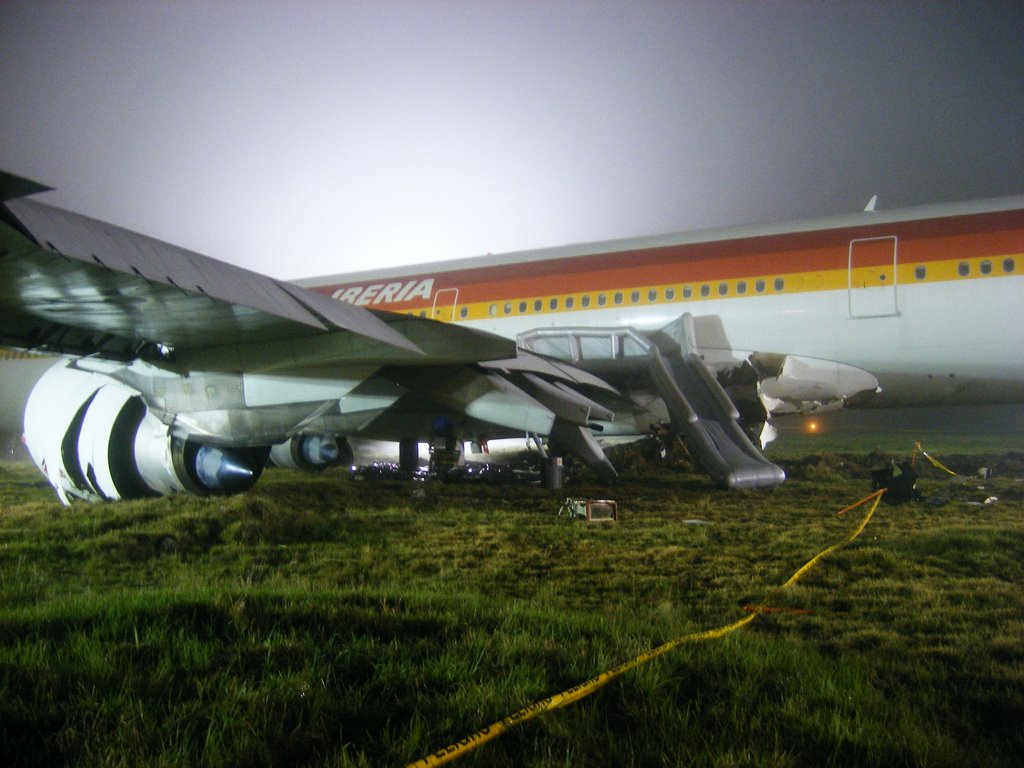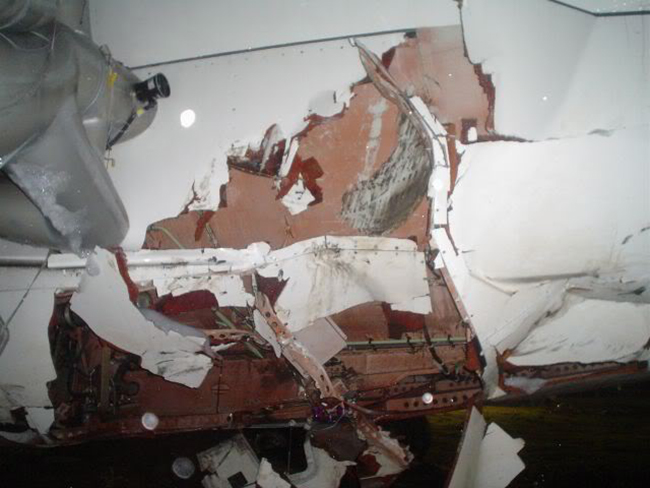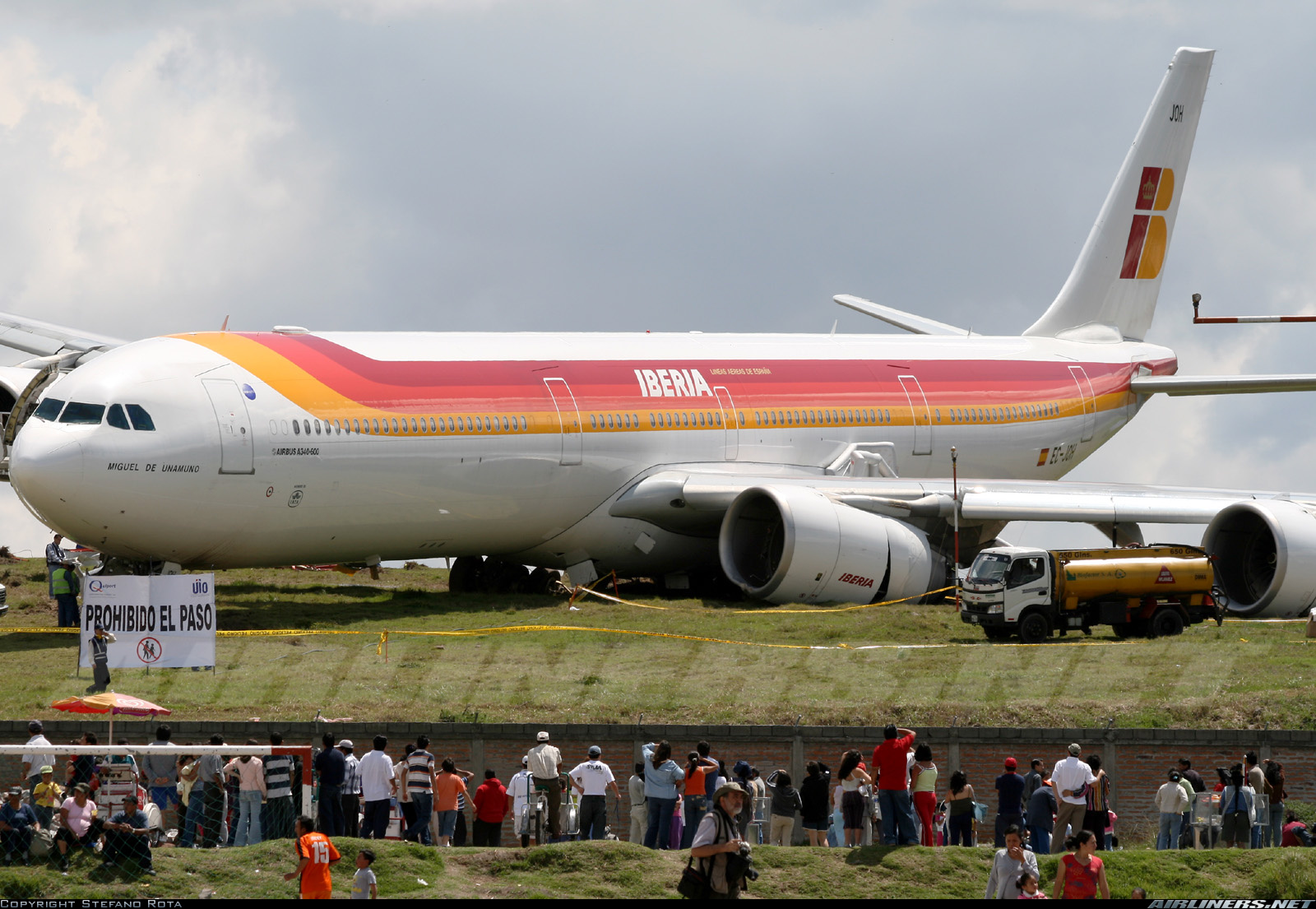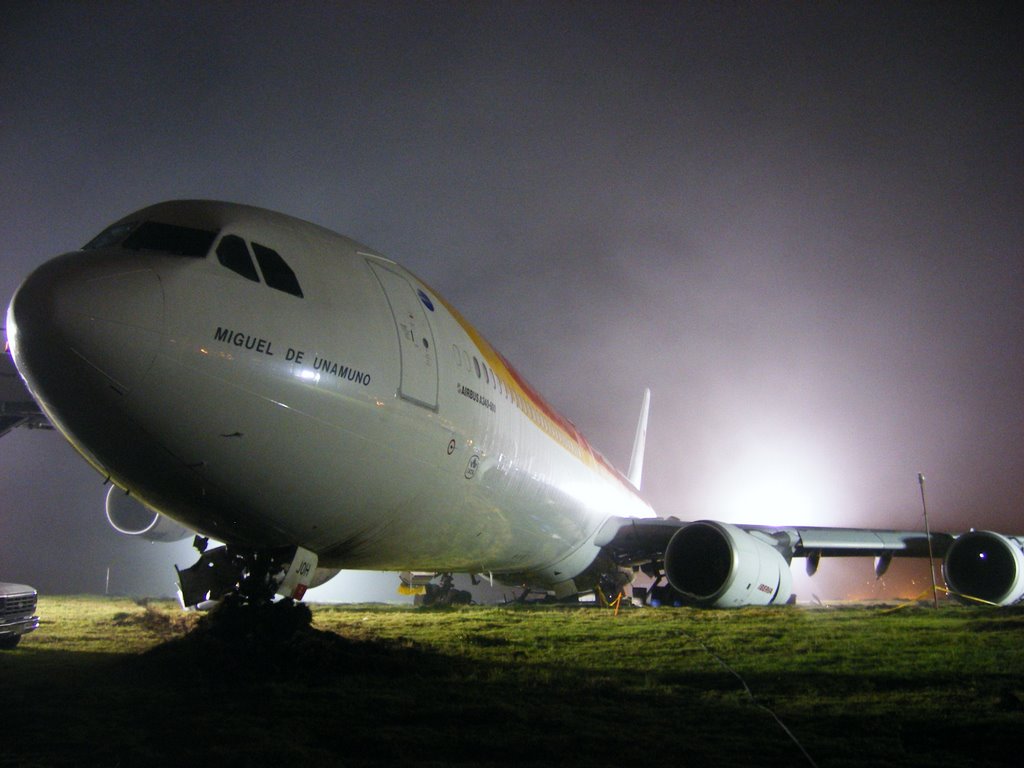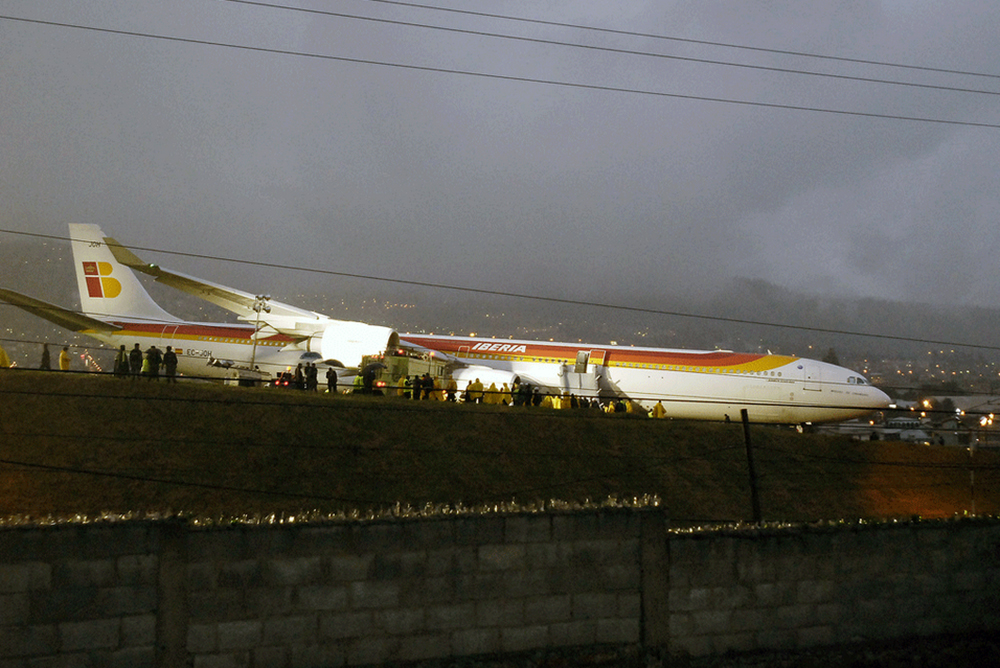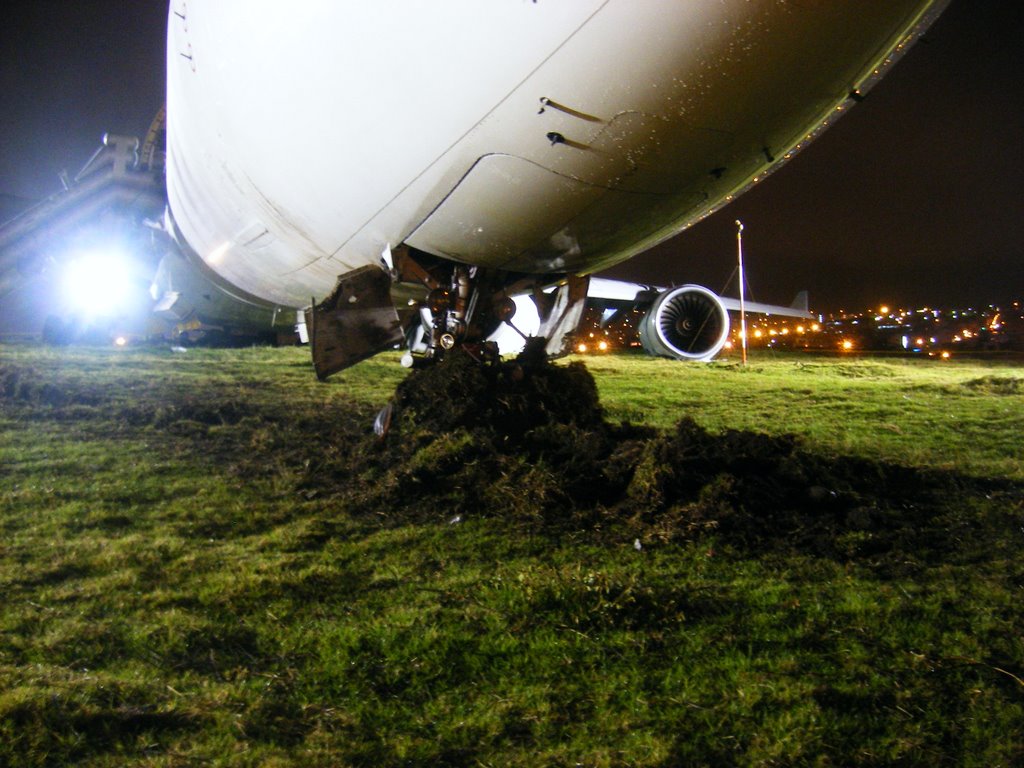Country
Ground accident of an Airbus A340-642X in Toulouse
Date & Time:
Nov 15, 2007 at 1710 LT
Registration:
F-WWCJ
Survivors:
Yes
MSN:
856
YOM:
2007
Crew on board:
9
Crew fatalities:
Pax fatalities:
Other fatalities:
Total fatalities:
0
Aircraft flight hours:
24
Circumstances:
The aircraft registered F-WWCJ was tested at a fixed point at Toulouse-Blagnac Airport. The current mission consisted of various test' systems with airline technicians who had ordered the plane. It unfolded engines in operation without chocks wheel. At the end of these tests, after having stopped and inspected the engines, the technicians restarted them for a new fixed point at high power, to find the source of oil seeps. About three minutes after power-up, the aircraft began to moving forward. The technician in the left seat noticed the movement and informed the test technician in the right seat. The latter acted on the brakes located rudder pedals then released the parking brake. The DFDR then shows a release of the brake command with the rudder bar. As the plane continues to advance, he tried to deviate from his course using the steering wheel. The nose gear quickly got in the way as the plane accelerated. The plane struck an inclined blast wall. Its front part broke and flipped over to the other side. Thirteen seconds elapsed between the start of the aircraft's movement and the shock with the wall. The aircraft was destroyed and all nine occupants were injured, four seriously.
Probable cause:
The accident was due to completion without chocks and on all four engines at the same time of a test during which the thrust was close to the capacity of the parking brake. The lack of a system for detecting and correcting drifts while carrying ground tests, in a context of industrial pressure and permanent sales force, encouraged a test to be carried out outside of the established procedures. The surprise led the ground test technician to focus on the brakes; therefore, he did not think of reducing the engines thrust.
Final Report:

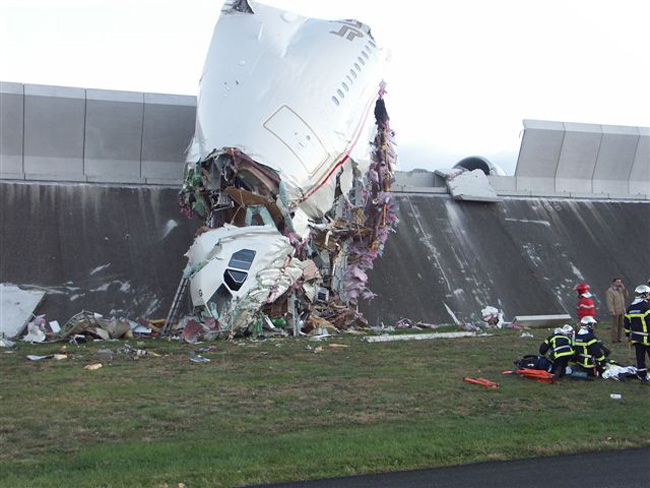

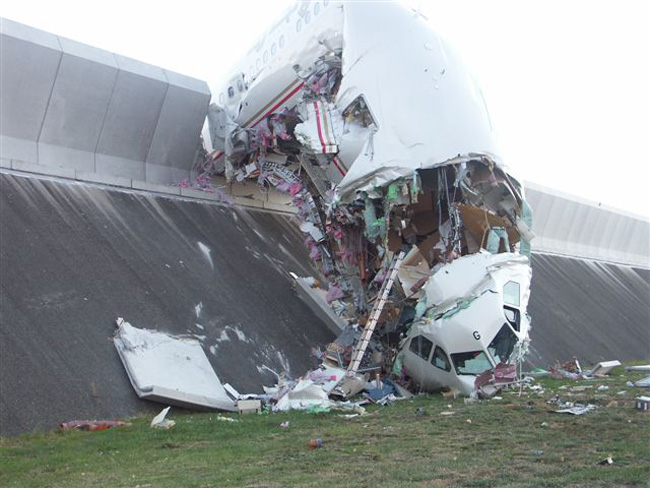

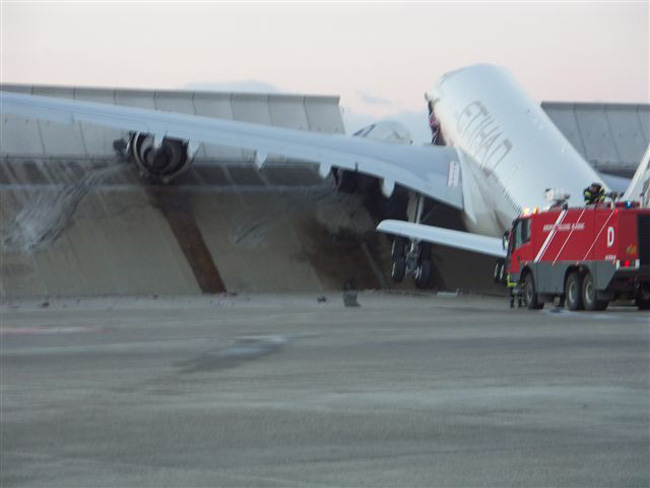
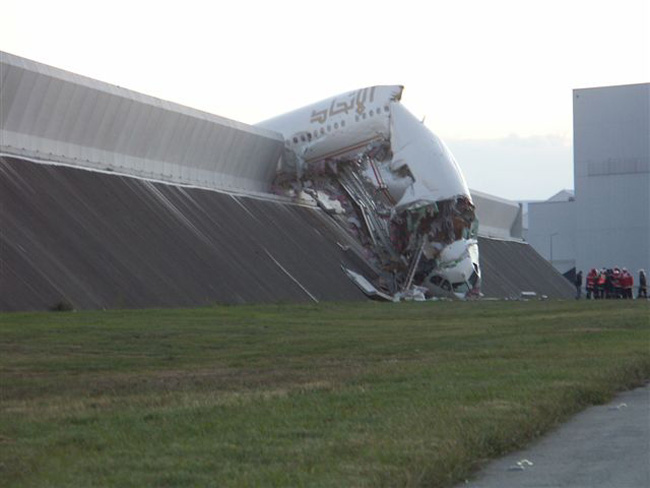
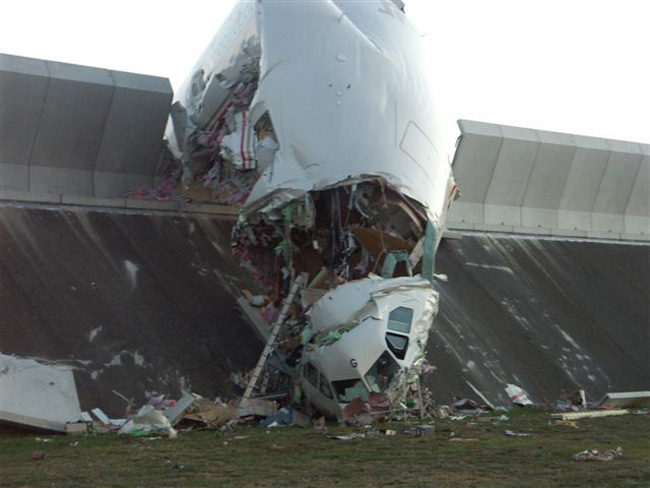
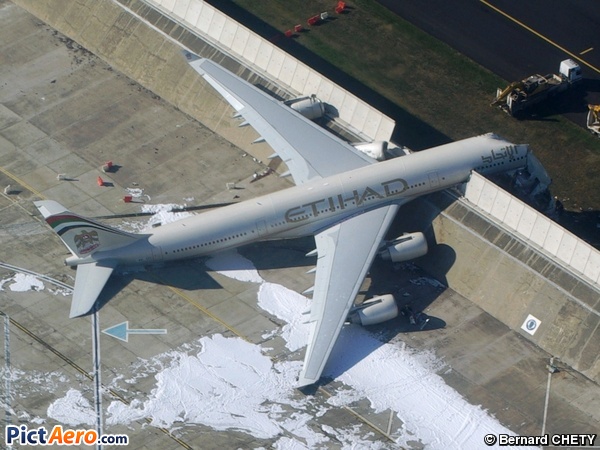
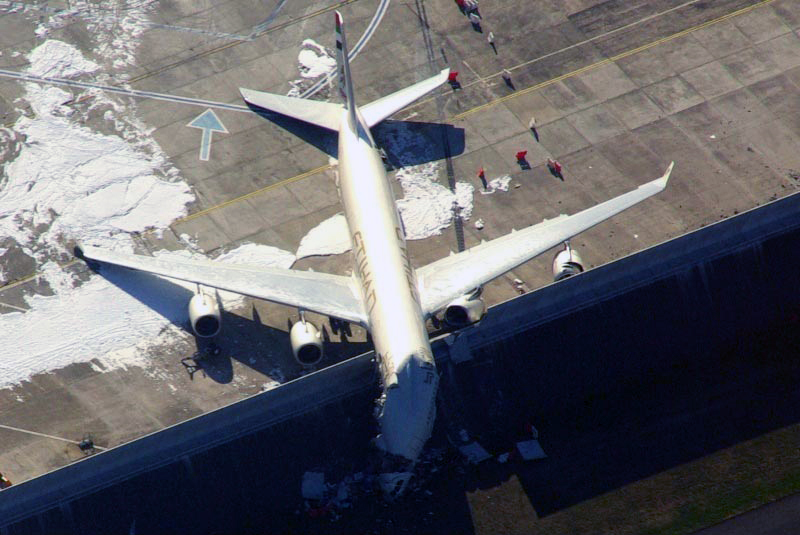


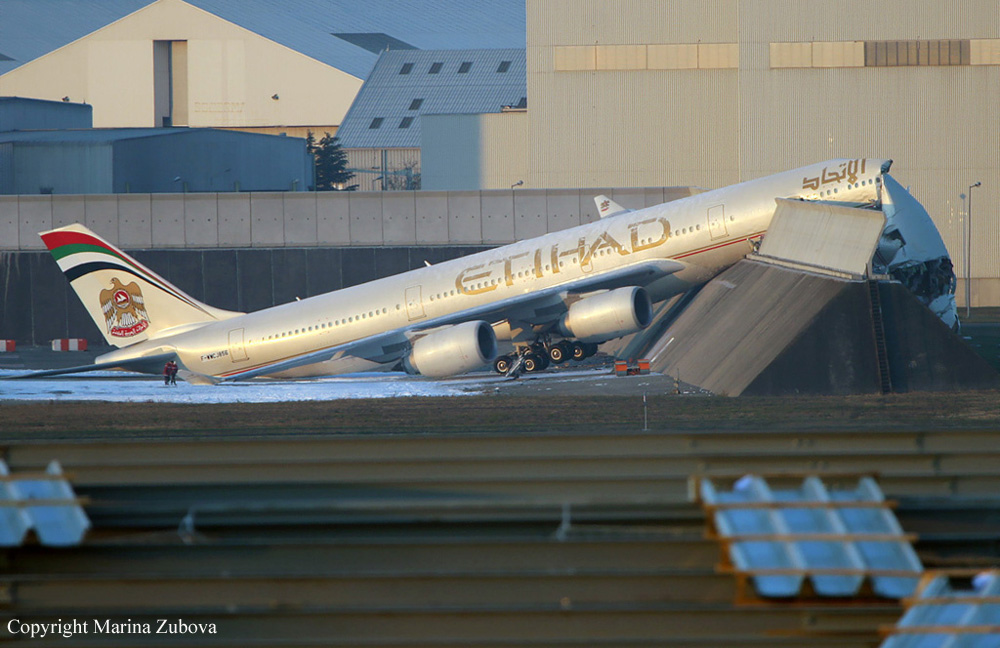
Crash of an Airbus A340-642 in Quito
Date & Time:
Nov 9, 2007 at 1706 LT
Registration:
EC-JOH
Survivors:
Yes
Schedule:
Madrid - Quito
MSN:
731
YOM:
2006
Flight number:
IB6463
Crew on board:
14
Crew fatalities:
Pax on board:
345
Pax fatalities:
Other fatalities:
Total fatalities:
0
Captain / Total hours on type:
2375.00
Copilot / Total hours on type:
1742
Aircraft flight hours:
8704
Aircraft flight cycles:
965
Circumstances:
Following an uneventful flight from Madrid, the crew contacted Quito Approach at 1650LT and received descent instructions in preparation for an instrument approach no. 4 (VOR QIT DME/ILS) for runway 35. During the descent the crew were notified that preceding flights had reported braking action medium to poor. The flight crew selected auto braking to 'High'. At 17:05, the crew reported the runway in sight, after which the controller stated that the wind was 170° at 4 knots, the runway was wet and reported braking action was poor. The flight was cleared to land. The pilot in command, following the procedures established by Iberia, decided to leave the ILS glide path and captured the path of the PAPI lights. The aircraft touched down 200 metres past the threshold at a 3.09g side load. The spoilers deployed automatically and main gear tyres 3 and 8 blew. The flap lever was moved involuntarily by the copilot, from the full position to position 2. The crew applied full manual braking and select reverse thrust. The Auto Brake function failed, after which the crew disconnected the antiskid braking system and continued to apply manual braking. The aircraft passed the end of runway 35, with a ground speed of 90 knots, hit the ILS localizer and stopped 232 meters further. Passengers and crew were evacuated using the slide at door 2R, thirty minutes after the aircraft stopped. All occupants escaped uninjured while the aircraft was considered as damaged beyond repair.
Probable cause:
Wrong approach configuration on part of the crew who decided to continue the approach to Quito Airport, knowing the poor runway conditions, poor weather conditions and the aircraft weight, and his failure to initiate a go-around procedure while forcing the aircraft to intercept the PAPI, causing the aircraft to be unstabilized.
Contributing factors:
- On the date of the incident, the crew did not have specific regulations and operating procedures (the briefing of the operator for the airport in Quito was inappropriate to the existent conditions).
- The fact that the crew still being experienced similar airports in Quito and had not experienced similar weather situations, circumstances that would have allowed a strategy of approximation consistent with the terms of this operation, in particular as regards:
- Calculations in flight for landing runway length,
- Minimum altitude to start the maneuver of changing the path of ILS to PAPI,
- Carrying out a very detailed briefing that allowed unwanted deviations on approach,
- The weather conditions existing at the time of landing (visibility, tail wind and moderate rain).
Contributing factors:
- On the date of the incident, the crew did not have specific regulations and operating procedures (the briefing of the operator for the airport in Quito was inappropriate to the existent conditions).
- The fact that the crew still being experienced similar airports in Quito and had not experienced similar weather situations, circumstances that would have allowed a strategy of approximation consistent with the terms of this operation, in particular as regards:
- Calculations in flight for landing runway length,
- Minimum altitude to start the maneuver of changing the path of ILS to PAPI,
- Carrying out a very detailed briefing that allowed unwanted deviations on approach,
- The weather conditions existing at the time of landing (visibility, tail wind and moderate rain).
